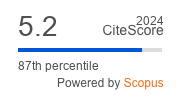Article | Open Access
Differentiated Implementation of Controls: The Internal Border Regimes of Schengen
| Views: | 1820 | | | Downloads: | 1127 |
Abstract: The use of temporary internal border controls in the Schengen Area reached a new record during the outbreak and spread of the Covid-19 pandemic. Several member states chose to introduce internal border controls that had not done so up until that point, while others have had continuous border controls in place since the refugee crisis in 2015. Other member states have never or only rarely used this temporary opt-out from the principle of free movement of persons inside Schengen. This development has raised the question of whether we are moving towards the disintegration of the Schengen Area as member states make very different choices regarding controls towards their EU neighbours. Comparing the use of internal border controls by all member states, the article suggests the concept of differentiated implementation to explain the variations in internal border regimes among Schengen member states. Focusing on two dimensions of control, the control of movement originating internally or externally to the EU, a typology is developed that conceptualises differentiated implementation as four types of internal border regimes. The analysis illustrates these four types by applying them to the use of controls up until 2022, identifying the grouping of member states. The proposed typology of internal border regimes presented represents an ambition to conceptualise the differences in internal border control use that have previously often been understood as a general problem of the Schengen regime.
Keywords: border control; Covid‐19; European integration; migration; Schengen Area; temporary borders
Published:
Supplementary Files:
© Johanna Pettersson Furst. This is an open access article distributed under the terms of the Creative Commons Attribution 4.0 license (http://creativecommons.org/licenses/by/4.0), which permits any use, distribution, and reproduction of the work without further permission provided the original author(s) and source are credited.




